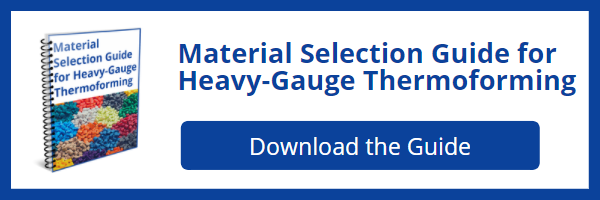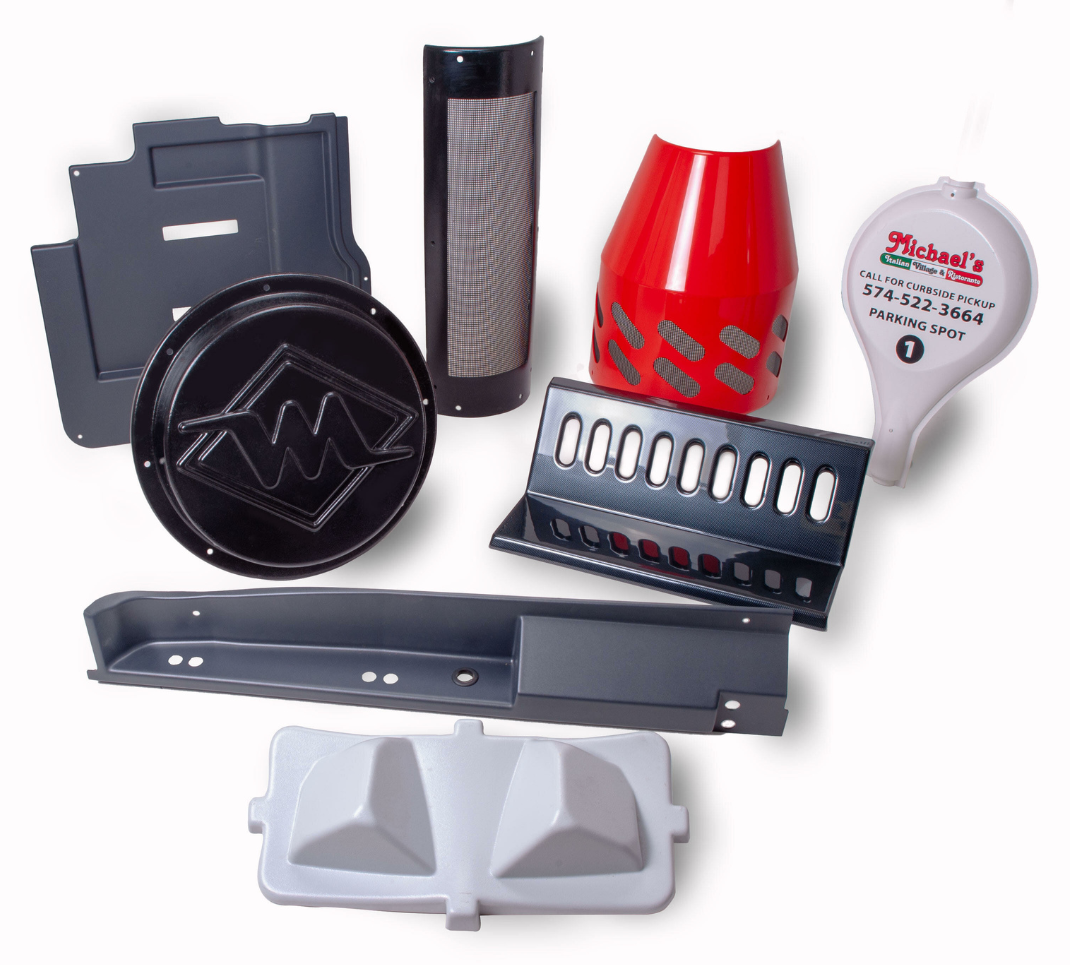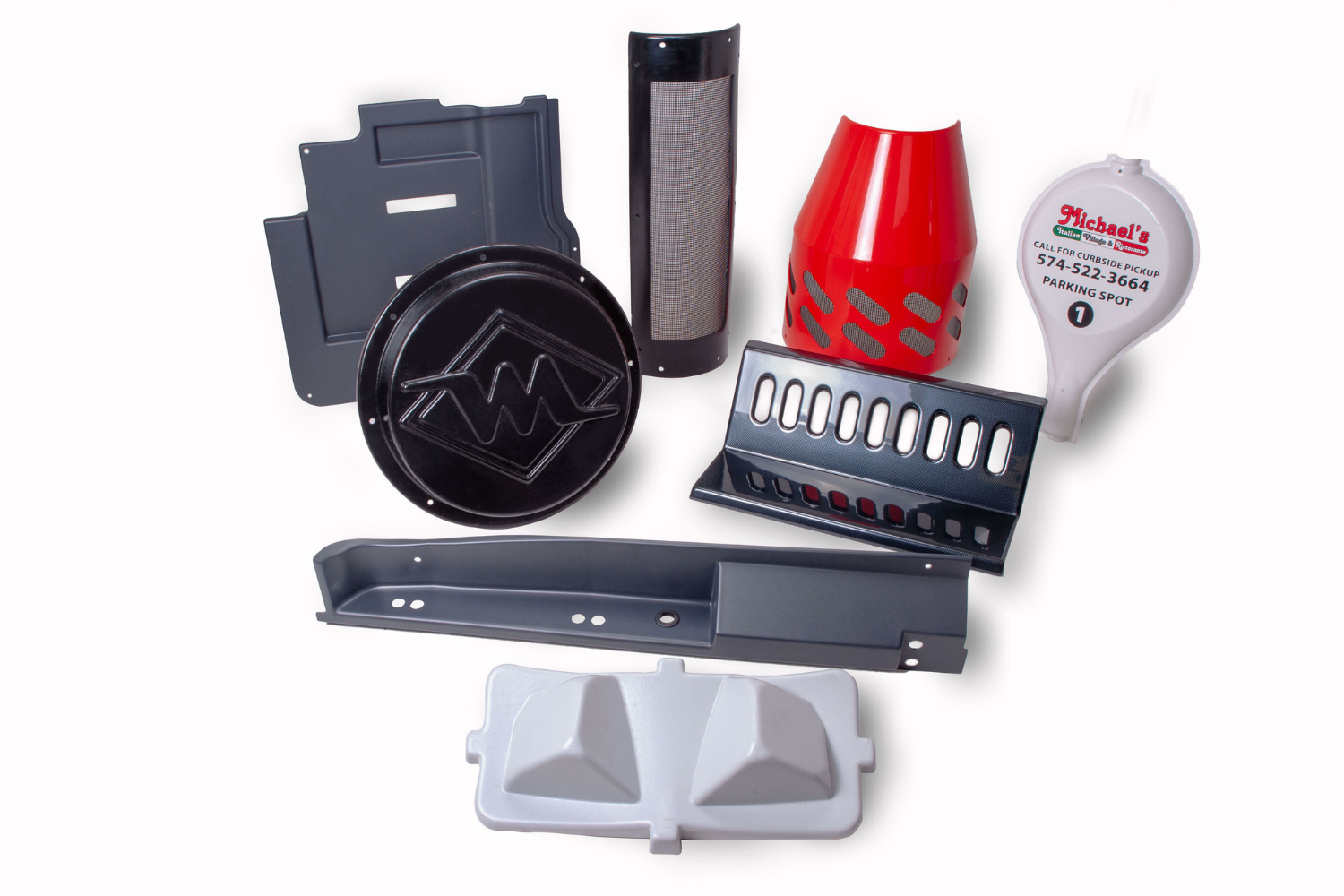Thermoforming Materials Overview—Part 2
In the second part of this overview of common thermoplastics used in thermoforming applications, we’ll look at some of the most widely used materials, as well as their properties, benefits, and some typical applications.
Click here to read part one of our Thermoforming Materials Overview.
Polyphenylene Oxide (PPO) blends
Available in a wide range of blends, and sold under a variety of trademarked grades, modified PPO is an engineering thermoplastic with high dielectric strength, good chemical resistance, and a low coefficient of thermal expansion. This strong, stiff material provides good impact resistance, outstanding electrical insulating properties, and is easy to form and machine.
PPO is typically blended with nylon, polystyrene, and other resins, depending on the application. The material’s dimensional stability makes it is an excellent choice for electrical applications requiring consistent tolerances. It is also frequently used for fluid handling applications such manifolds, pump-valve-fittings, as well as scientific instrument housings, covers, and components.
Polypropylene (PP)
Second in volume of usage only to polyethylene, polypropylene’s popularity as a choice for a wide range of thermoforming applications is a result of its versatile chemical and physical properties, as well as low cost compared to engineered resins. In its isotactic form, PP has a high degree of crystallinity (30 to 60%) and provides a high melting temperature in the range of 170 C to 160 C. PP has low water absorption, good chemical resistance, low electrical conductivity, and good resistance to fatigue.
The polymer’s inherently low density of 0.895 to 0.92 g/cm3 makes it a cost-effective choice for molding large parts. Co-polymerization with ethylene enhances PP’s toughness allowing it to compete with ABS for certain applications. PP can be vacuum formed into a variety of large parts such as shipping trays, automobile dashboards, panels, bins, and enclosures. Pressure forming can also be utilized for parts requiring higher levels of detail such as scientific and medical equipment
Polyethylene (PE)
Polyethylene is the most widely used plastic polymer and is manufactured in generic variants, the three most common being low-density PE (LDPE), high-density PE (HDPE), and high-molecular weight PE. HDPE has a high strength-to-density ratio and a melting point of approximately 130 degrees C. Because its polymeric structure has little branching, HDPE has improved tensile strength and impact resistance compared to LDPE. Typical applications include enclosures, pallets, toys, and totes.
High molecular weight PE (HMWPE), also known as high-modulus polyethylene, is a polymer comprising extremely long chains (up to 7 million amu) aligned in a parallel orientation. This structure helps to transfer loads through the length of the polymer backbone. The polymer has a melting point of 130 to 136 degrees C and, unlike HDPE, has excellent corrosion resistance. Additionally, HMWPE has low moisture absorption, a low coefficient of friction (comparable to Teflon), and is highly resistant to abrasion. The material is used to thermoform large parts requiring high-impact strength, chemical resistance, and abrasion resistance.
Polyethylene Terephthalate Glycol (PETG)
PETG is a clear plastic sheet that has 4x the impact resistance of acrylic and a lower cost than polycarbonate. The material is sold in sheets with dimensions up to 60 in. x 96 in., with a thickness of 0.020 in. to 0.80 in. PETG’s low forming temperature facilitates excellent thermoforming characteristics for applications requiring deep draws, and precise molded-in details. The material is FDA compliant and typical applications include trays, equipment housings, and machine guards.
Polycarbonate (PC)
As its name implies, polycarbonate is a material that includes carbonate groups within its polymer chain. The carbonate group provides the material with a level of transparency comparable to glass, at half the weight. Sold under a variety of trademarked brands and types, including sheet and film, the material has a high heat resistance and outstanding toughness and stiffness over a wide range of temperatures. PC also provides good abrasion and chemical resistance. PC is used in the manufacture of automotive interior parts, greenhouse and nursery enclosure panels, packaging, and medical applications.
High Impact Polystyrene (HIS)
A low-cost, tough polymer that is easy to thermoform, shape, and fabricate, HIS is commonly used for countertop point-of-purchase displays, thermoformed machine housings and parts, shelves, fixtures, and additional applications. The material can be ordered in a variety of sheet dimensions and thicknesses. Standard sheet dimensions range from 40 in. x 72 in. to 48 in. x 96 in., in thicknesses from 0.020 into 0.250 in. HIS components can be assembled via mechanical fasteners or adhesives. HIS also affords a printable substrate that can be decorated by a variety of printing methods.
Thermoplastic Elastomer (TPE)
TPE is a lightweight, flexible, fatigue-resistant blend of thermoplastic and rubber comprising a wide range of materials and material properties; exhibiting an elasticity to that of cross-linked thermoset rubber. For thermoforming applications TPE is supplied in sheets with a typical standard size up to 32 in. x 48 in. with a thickness in the range of 0.125 in. to 0.19 in. The material can be customized with fillers and additives to provide a material with high scratch – and UV resistance ideal for parts used outdoors.
Thermoforming is very flexible and offers many opportunities to design unique, lightweight, and durable parts. The key is knowing what materials to use for each particular application.
Contact our experts to help you determine the best materials for your thermoforming application.



